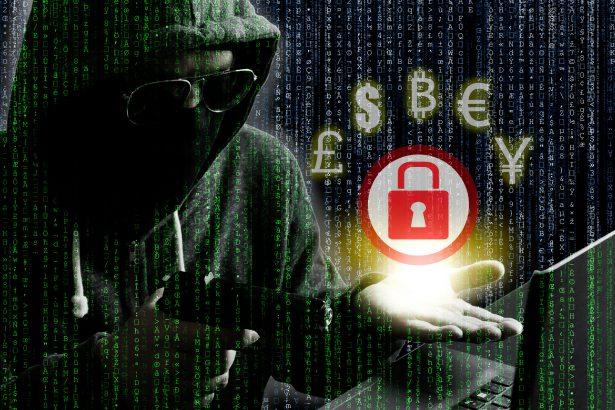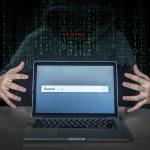Ransomware is a type of malicious software designed to encrypt files on a victim’s device, rendering them inaccessible until a ransom is paid. These threats are highly disruptive and often financially devastating. Cybercriminals deploy ransomware to extort money from individuals and businesses by taking their critical data hostage. With the rise of increasingly sophisticated ransomware strains, it’s vital to understand and protect against these threats. One such variant currently causing significant concern is the Mzlff ransomware.
Download SpyHunter Now & Scan Your Computer For Free!
Remove this and any other malicious threats to your system by scanning your computer with SpyHunter now! It’s FREE!
What is Mzlff Ransomware?
How It Functions
Mzlff ransomware is a strain of the STOP/Djvu ransomware family, notorious for its file-encrypting capabilities. This malware is designed to infiltrate systems stealthily and encrypt files using robust encryption algorithms. Once files are locked, their extensions are altered to include the “.mzlff” suffix, making them inaccessible. For example, a file named document.docx becomes document.docx.mzlff.
Installation Methods
Mzlff ransomware primarily spreads through:
- Malicious Email Attachments: Victims may receive emails with infected attachments disguised as legitimate files (e.g., invoices or documents).
- Software Cracks or Keygens: Cybercriminals often bundle ransomware with pirated software or activation tools.
- Unsecured Remote Desktop Protocol (RDP): Exploiting weak RDP credentials is a common attack vector.
- Fake Updates: Malware can masquerade as essential software updates, luring users into installing it.
Actions After Installation
Once installed, Mzlff ransomware performs the following actions:
- File Encryption: It encrypts a wide range of file types, such as documents, photos, and videos, making them unusable.
- Ransom Note Creation: A text file named _readme.txt is placed in affected folders, detailing ransom payment instructions.
- System Changes: It may disable security measures and alter system settings to maintain persistence.
Consequences
The ransomware’s encryption leaves victims unable to access their files. The ransom note demands payment (often in cryptocurrency) in exchange for a decryption key. Paying the ransom does not guarantee data recovery, and doing so funds further criminal activities.
Symptoms of Mzlff Ransomware Infection
Victims of Mzlff ransomware may notice:
- Files are inaccessible and have the “.mzlff” extension.
- A text file (_readme.txt) appears in numerous folders.
- Unusual system slowdowns or crashes.
- Security software is disabled or malfunctioning.
- Increased network activity as the ransomware communicates with its command-and-control (C&C) servers.
Detection Names
Antivirus tools may detect Mzlff ransomware under various names, including:
- ESET: Win32/Filecoder.STOP
- Kaspersky: Trojan-Ransom.Win32.Stop
- Microsoft Defender: Ransom:Win32/StopCrypt.MZ!MTB
- Avast/AVG: FileRepMalware
These detection names help identify and confirm the presence of Mzlff on a system.
Similar Ransomware Threats
Other notable ransomware strains include:
- Dharma: Similar file encryption methods and ransom demands.
- Maze: Notorious for exfiltrating data before encryption.
- Ryuk: Targets businesses and demands high ransoms.
Comprehensive Removal Guide
Download SpyHunter Now & Scan Your Computer For Free!
Remove this and any other malicious threats to your system by scanning your computer with SpyHunter now! It's FREE!
Step 1: Disconnect from the Internet
Prevent the ransomware from communicating with its C&C servers:
- Disable Wi-Fi or unplug the Ethernet cable.
- Avoid reconnecting until the system is cleaned.
Step 2: Boot into Safe Mode
- Restart your computer.
- Press F8 (or the appropriate key for your system) before Windows starts loading.
- Select Safe Mode with Networking from the options.
Step 3: Use an Anti-Malware Tool
Download and install a reliable anti-malware tool like SpyHunter:
- Download and install the tool.
- Run a full system scan.
- Follow the tool’s instructions to remove all detected threats.
Step 4: Remove Residual Files Manually
- Open Task Manager (
Ctrl + Shift + Esc) and terminate suspicious processes. - Navigate to AppData, Temp, and Startup folders to delete ransomware-related files.
- Clean the registry using tools like CCleaner (optional but recommended).
Step 5: Restore Files
- Decryption Tools: Search for legitimate decryption tools for STOP/Djvu variants (e.g., Emsisoft).
- Backup Recovery: Restore files from a secure backup if available.
- File Recovery Software: Use tools like Recuva to attempt partial recovery.
Prevention Tips
Download SpyHunter Now & Scan Your Computer For Free!
Remove this and any other malicious threats to your system by scanning your computer with SpyHunter now! It's FREE!
- Regular Backups: Store backups on external drives or secure cloud services.
- Email Vigilance: Avoid opening suspicious emails or downloading unknown attachments.
- Secure RDP: Use strong passwords and two-factor authentication.
- Keep Software Updated: Install updates promptly to patch vulnerabilities.
- Antivirus Protection: Use tools like SpyHunter for proactive malware defense.
Why SpyHunter?
SpyHunter is a trusted anti-malware solution designed to detect and eliminate threats like Mzlff ransomware. Its advanced scanning algorithms ensure comprehensive protection. Download SpyHunter today to safeguard your system and scan for free.
The Ransom Note: A Detailed Overview
Mzlff ransomware leaves a ransom note titled _readme.txt, which informs the victim of the attack and provides instructions for payment. The note typically includes:
- A demand for payment in Bitcoin to receive the decryption tool.
- A unique victim ID, used to identify the specific case.
- Contact information for the attackers (e.g., email addresses or Telegram accounts).
- Warnings against using third-party recovery tools or attempting decryption on your own.
The ransom amount is often tiered, with a “discount” offered for prompt payment. Despite these promises, paying the ransom is strongly discouraged.
Text in the Ransom Note
MZLFF Ransomware
YOUR FILES HAVE BEEN ENCRYPTED !
Все ваши файлы на компьютере зашифрованы с помощью 256-битного шифрования уровня AES (Created by Mazellov And JumperYT)
Ваши документы, видео, изображения и другие формы данных теперь недоступны и не могут быть разблокированы без ключа дешифрования. Этот ключ в настоящее время находится у @JumperYT
Чтобы получить этот ключ, переведите 0,000014 BTC на указанный адрес кошелька до истечения времени.
Если вы не предпримете никаких действий в течение этого периода времени, ключ дешифрования будет уничтожен, и доступ к вашим файлам будет безвозвратно потерян а материнская плата компьютера будет сожжена рекурсивной нагрузкой.
12mdKVNfAhLbRDLtRWQFhQgydgU6bUMjay




